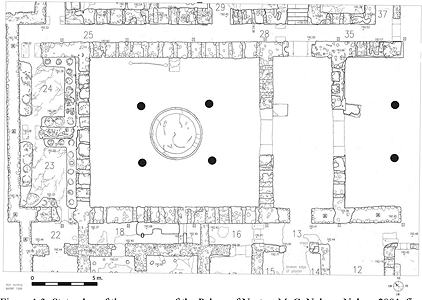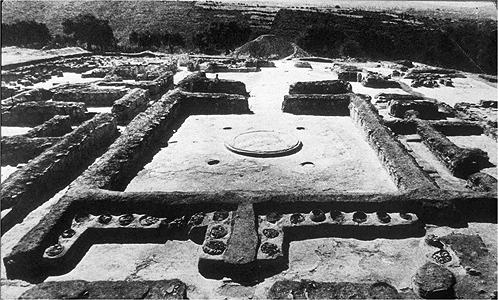
Pylos, Palace and Megaron of Nestor


The Palace of King Nestor of Pylos, is the best preserved Greek palace form the Myceneaen Period, dating from 1300 BCE, and destroyed in a 1200 BCE fire, located in current Messenia, Peloponnese, Greece. The Palace was the central architecture of a wall-fortified Late Helladic era town. Within its two-story walls, the Palace contained reception rooms, kitchens, workshops, baths, storerooms, and had a sewage system. Its most important feature was a "Megaron" —a sophisticated architectural form accessed from a fore-courtyard, consisting of a porch with two symmetrical columns, an inner vestibule—and a large central hall, with a quadrangle of columns surrounding an open-roof heath, and a throne on a side wall. Megaron architecture was typical of Greek mainland palaces and private houses, and its formal origins have been traced to Greek Early Helladic settlements and earlier Neolithic settlements of Southwest Asia (see pages ). King Nestor's Palace at Pylos is described in Homer's telling of the Trojan War in The Odyssey and The Illiad. Early Classical Greek temples seem to have taken their plan form from the Megaron (see pages ).
Elevation of Pylos above sea level is near sea level.
Construction materials were stone walls, wood roof support and ceramic tile roofing.
Data source for CG model:
1.Biers, William R. (1996). The Archaeology of Greece: An Introduction. Ithaca, NY: Cornell University Press, 1996.
2. https://www.brown.edu/Departments/Joukowsky_Institute/courses/greekpast/4888.html
3. Müller, Valentin,1944; Development of the "Megaron" in Prehistoric Greece, American Journal of Archaeology, Vol.48, No. 4 (Oct. - Dec., 1944),
Published By: Archaeological Institute of America


